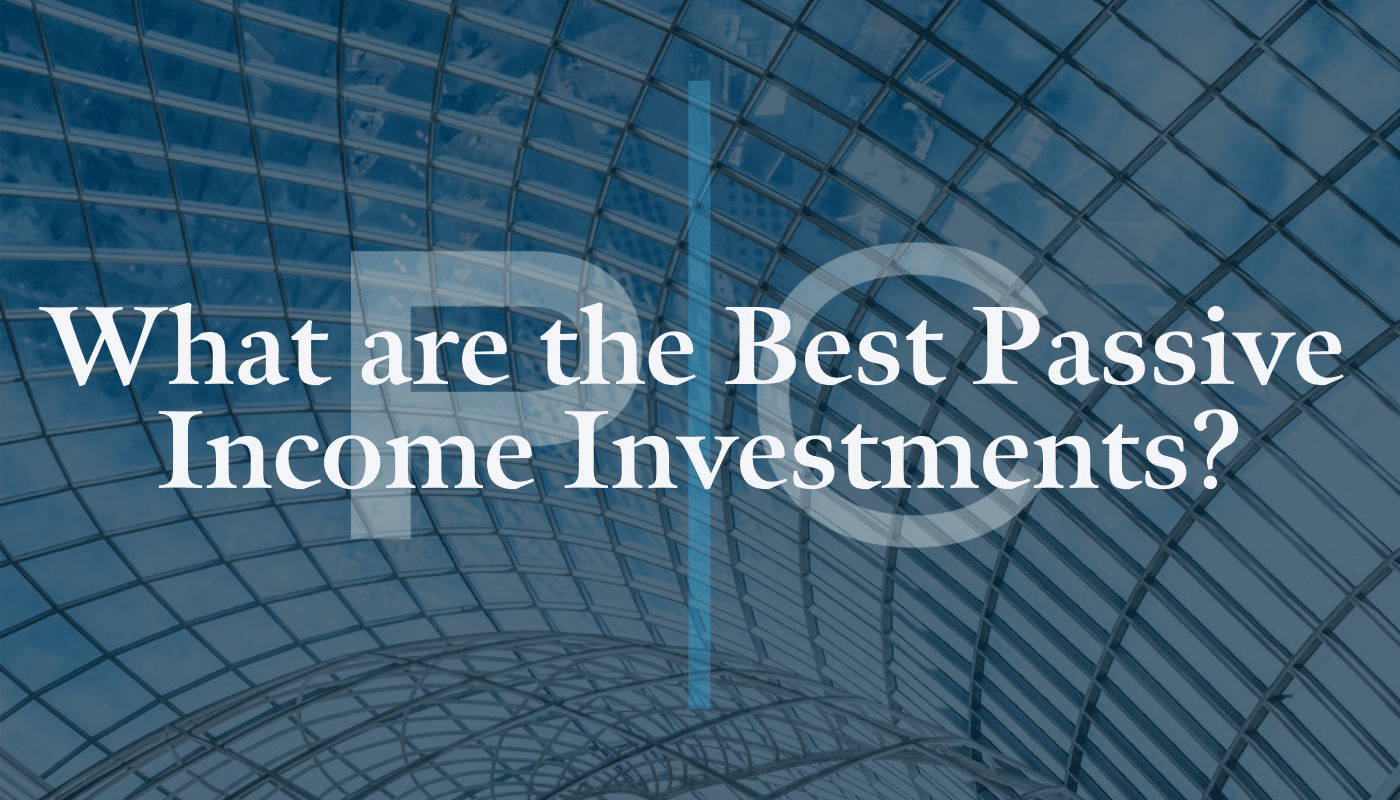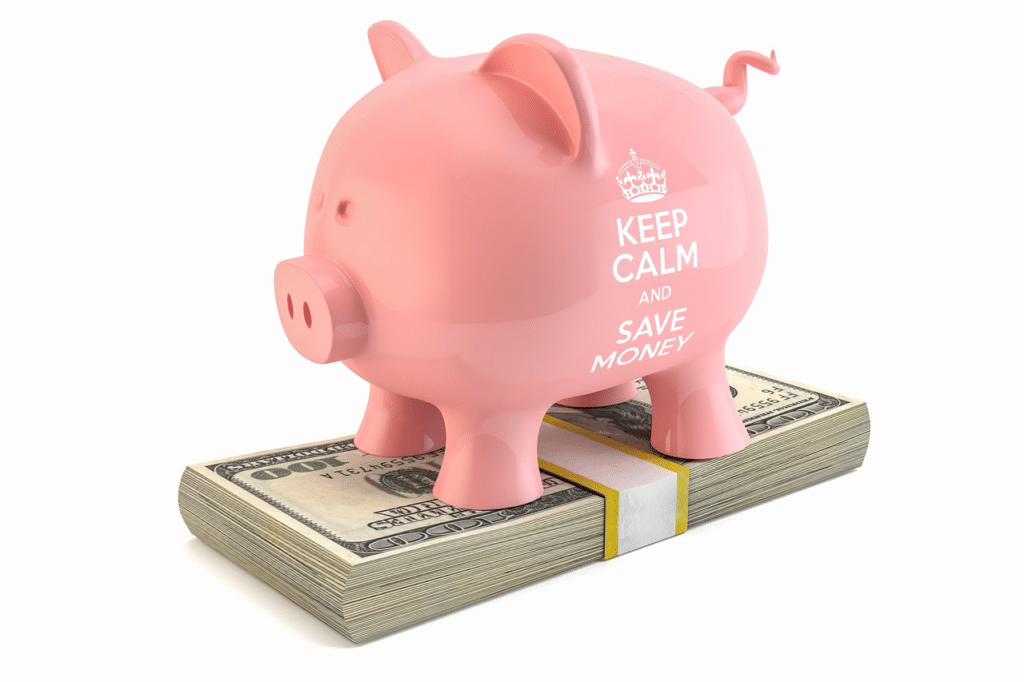What are the Best Passive Income Investments?
By Percy Nikora, Owner, Co-Founder

Many people will find it hard to get ahead in life by solely working a routine 9-to-5 job. Those with the most financial freedom tend to get there with some combination of active and passive investing. Active investing requires ongoing, even daily, oversight of investment activities. Passive investing, as the name implies, allows investors to take a more hands-off approach.
We can use the stock market to explain the difference between active and passive investing. An active stock trader will buy and sell stocks, including individual stocks, on a daily (if not hourly) basis. A passive investor, on the other hand, might instead invest in the S&P 500 and let the market run its course. Numerous studies have shown that, over time, passive investing can be just as lucrative as active investing.
There are many forms of passive investing, which we’ll get into below. There is no “best” passive income investing strategy. Indeed, different kinds of passive income investments have their own pros and cons to consider. Read on to learn more.
Related: Active vs. Passive Real Estate Investing – Which is Right for You?
Passive Income Explained
Passive investing is an investment approach that seeks to maximize returns while minimizing the frequency of trading in the market. Another way to think of passive investing is that it allows investors to take a relatively hands-off approach; there is little day-to-day oversight of investment activities.
One of the primary benefits to passive investing is that it limits transaction costs. Each trade carries some sort of fee, whether you’ve investing in a traditional stock, bond, or alternative investment such as a commercial real estate fund.
Passive income investing is certainly not without its own risks. For example, many passive investments are subject to broader market risk. Index funds, for example, track the entire market and are therefore subject to the same ebbs and flows as actively traded stocks, bonds and the like. Passive funds often fail to outperform their benchmark indexes once management fees are factored in. That said, there are many ways to invest passively that are entirely separate from the securities market, which we’ll cover in more detail below.
Sign up to receive our educational newsletter and to gain exclusive access to our next investment opportunity.
Passive income investments
CDs / Money Market
The terms “CDs” and “money market” accounts are often used interchangeably, but they are indeed different forms of passive investing. They are both types of federally insured savings accounts, but certificates of deposits (CDs) generally provide a higher interest rate in exchange for investing over a specific period of time (e.g., 3 months or 5 years). Cashing in on a CD carries a steep penalty, which is why some people opt for the flexibility of money market accounts instead. A money market account provides higher interest than a typical savings account, but still provides the flexibility to withdraw funds on short notice. CDs offer a guaranteed return whereas money market accounts have a variable return.
Bonds
Bonds are loans made to large organizations, such as corporations cities and national governments. When someone invests in a bond, they’re buying a share of a much larger loan (usually totaling millions of dollars). When bonds are held to maturity, bondholders can expect to have their entire principle plus interest repaid. A bond pays back a fixed rate of return at a rate that is generally lower than what one might expect when investing in the broader stock market. That said, bonds are stable and therefore considered a “safe” form of passive investing. Investors will usually allocation some portion of their portfolio to bonds in order to provide a steady, predictable income stream.
Real Estate
There are several ways to invest in real estate passively. The most common way to do so is by investing in a real estate fund. Funds aggregate capital from an array of investors and then use these pooled funds to invest in specific real estate deals. Funds are usually structured to have a sponsor, or the “general partner,” who is then responsible for the day-to-day management of all real estate investing activities – from acquisition to renovation, stabilization and eventually disposition. Passive investors are referred to as “limited partners” and have very little say in routine decision making. Most funds stipulate that LPs must earn a specific rate of return before GPs can access any of their profits, thereby ensuring interests between parties are aligned.
Interested in diversifying your portfolio? Contact Penn Capital for more information
REITs
Real estate investment trusts, or REITs, are another form of passive real estate investing. REITs are shares of real estate companies that can be purchased and sold as easily as stocks and other securities. REITs are often, but not always, publicly traded. Investing in a REIT is a preferred alternative for those interested in adding commercial real estate to their portfolios but who do not want to take on the risk of investing in their own real estate or through a fund. A REIT is an alternative investment vehicle in which investors still benefit from the gains, refinances, sale, and income (or loss) of the property. REIT investing can be done for $500 or less, making it an attractive option for those who are just getting started and who may not be accredited investors.
Dividends
When someone refers to “dividend” investing, they are usually talking about dividend stocks. Essentially, dividend stocks are stocks that provide a payout to investors that is divided equally amongst investors depending on their number of shares. To approximate what the dividend will be, you must calculate the total amount a company pays in dividends per year by the price of the stock to obtain what’s known as the dividend yield. For example, a stock that pays annual dividends of $0.60 per share and trades for $10 per share would have a dividend yield of 6 percent. One downside to dividend investing is that investors must pay taxes on those dividends each year.
P2P
Peer-to-peer lending, often referred to as “P2P” lending, is the practice of loaning money to borrowers who wouldn’t otherwise qualify for traditional loans. P2P lending is a form of hard money lending. As the lender, you have the ability to hand-pick your borrowers and help set the interest rates based on the nuances of the situation. There are several P2P lending platforms, a popular one being Lending Club. Lending Club investors will often realize a four- to six-percent return, on average, which is significantly higher than they’d get by investing in most money market accounts, CDs or bounds.
Private Equity
Private equity is considered an alternative investment type in which individuals or companies directly invest in other private companies, participate in buyouts of public companies, contribute venture capital, or invest in real estate. Private equity offers the promise of exclusive deals and outsized returns, but these deals are often risky – they can trap investors with onerous restrictions like high capital requirements and longtime commitments. Most private equity investors will hold their investments for at least ten years, making this a form of passive investing that’s best for those with a long-term buy and hold investment strategy. Private equity investing is typically included in portfolios that are otherwise balanced with “safer” investments, such as bonds.
Crowdfunding
Yet another way to passively invest in real estate is via crowdfunding. Crowdfunding, sometimes referred to as “crowdsourcing,” is a tool used by sponsors to aggregate capital for their real estate projects. Crowdfunding allows individuals to invest small dollars (as little as $100, in some cases) in specific real estate deals or funds. Changes in federal regulations have made real estate crowdfunding more commonplace since around 2014, with investors now routinely earning 7 to 13% returns on an annual basis. Crowdfunding is attractive to those who cannot afford to (or who otherwise do not desire to) own real estate directly. It is also appealing to those with a low risk tolerance who still want to dip their toes into the real estate investing waters.
Creating Products
Another way to earn passive income is to create your own product that can then be licensed or sold on a large scale. Music is a great example. A pop singer can create a record and then sell copies, even digitally, to countless people across the world. E-books are another great example of a product that can be created relatively easily and sold to the masses on an ongoing basis. The key to creating passive income with products is that once the product is on the market, the owner can sit back and allow users to download their content (for a fee) without having to provide any significant oversight.
High Yield Savings Accounts
High yield savings accounts are usually held by traditional banks and funds are FDIC insured. Money market accounts are one such example (though, to be sure, money market accounts are not always FDIC insured). High yield savings accounts generate returns that are higher than typical savings accounts but are still substantially lower than one might expect to earn with other passive investments. A good rate of return on a high yield savings account is only about 2 percent.
Annuities
An annuity is a long-term investment that is issued by an insurance company. It is designed to help protect investors from the risk of outliving their retirement, savings or other income. Through annuitization, the funds you contribute during the lifetime of the annuity are then converted into period payments that can last for life. The amount of the payments depends on how long the person has been investing in the annuity and depends on when they decide to “cash in” their annuity. An annuity is a good way to passively invest for those who want to supplement their income during retirement.
Related: Why Angel Investors Should Consider Real Estate Investment
How many sources of income should you have?

People often ask how many sources of income they should have. There’s no right or wrong answer. The key to long-term financial freedom is simply having multiple streams of income. Those who rely solely on their 9-to-5 salary and employer-sponsored 401k often find their lives in upheaval when there’s an economic downturn. Having multiple sources of income helps to hedge against a disruption in any specific stream of income, thereby allowing an individual to continue on with their life relatively uninterrupted. A survey of millionaires finds that, on average, millionaires have seven different sources of income which may include their annual salary, dividends, real estate cash flow and more.
Passive income strategies to know
Save up first
Most passive income strategies require some up-front legwork, and that legwork includes saving. Many people live paycheck to paycheck. The problem with this approach is that it leaves no money to passively invest, regardless of the form of passive investing someone wants to do. Those who are interested in passively investing will want to start by paying off any credit card and other high-interest debt they’re currently accruing. This does not mean mortgage balances or student loan debt, as these are often at lower rates and are considered “good” debt to have, as long as you’re routinely paying down that debt. This is a good time to create a rainy day fund for personal needs, as well. That way, if your car breaks down, you have enough cash on hand to cover the expenses without having to incur the potential penalties associated with cashing in on your passive investments. A good rule of thumb is to have three months’ worth of living expenses in the bank before passively investing. Once you’ve taken these steps, you’ll be in a good position to passively invest.
Be Organized
Successful investors are highly organized. They have spreadsheet after spreadsheet tracking their total debts, incomes and outstanding liabilities. This level of organization is necessary when passively investing. It helps you understand where income is coming from (dividends, cash flow, etc.) vs. payments that need to be made. Diligent accounting of all household income is the first step to creating a thoughtful, balanced portfolio that includes a mix of passive income streams. For example, buying a commercial property may be a large one-time investment that then skews your portfolio heavily toward real estate. The organized investor will monitor their portfolio and reallocate funds as needed to ensure an optimal risk level based on their investment horizon.
Do Continued Market Research
Many people will rely on their financial advisors to steer their investments. This is understandable, as those professionals are experts in the field. However, this does not eliminate the responsibility of investors to continue to do their own market research. For example, most financial advisors will steer their clients’ portfolios toward some mix of traditional investments like stocks and bonds. This approach may inherently leave out alternative asset classes, like commercial real estate or private equity. Instead, investors should be conducting their own homework as well to ensure their advisors are optimizing their portfolios. Moreover, while passive investing intentionally keeps trading activity to a minimum, that does not mean that buying and selling should not occur. For example, someone with their money in a high-yield savings account may find that they’re earning less interest when interest rates drop. Instead of earning a “safe” 2% rate of return, the investor might instead consider pulling those funds out and putting them into a bond, CD or other passive vehicle that can generate a marginally higher return.
Which Passive Income Investment is the Best?

There’s no single “best” passive investment. There are many passive investments, and as indicated above, savvy investors usually include some combination of passive investments in their portfolio. This may include passive investments in real estate, bonds, money market accounts, dividend investing, P2P lending and more.
With so many options to consider, how do you determine where to begin? The answer to that really depends on the investor’s risk profile, time horizon, and other investment allocations. For example, someone who’s portfolio already leans toward high-risk investments (active or passive), may consider investing in CDs or bonds to help lower how much risk they’re taking on at once. The same principle holds true with time horizon: someone may be more likely to engage in dividend investing or private equity if they have longer investment time horizons.
Another factor to consider is liquidity. Some passive investments are inherently much more liquid than others, including dividend investing, REITs and fixed income or bond investing. Private equity and real estate, on the other hand, are provide less liquidity.
All passive investments are appropriate for somebody, it’s a matter of identifying which passive investments are best given your other investments and personal goals.
Interested in passive income investments? Penn Capital can help you get started.
Conclusion
Passive investing can feel daunting for those who are just getting started. The key is to simply get started! Even small investments today can translate into significant gains in the future. The goal for investors getting started should be to start early and start often. A good rule of thumb for those genuinely taking their first step is to consider investing the equivalent of a “latte a day”. Rather than spending $5 on a craft beverage, coffee-laden or otherwise, consider passively investing these funds ($35 per week) in one way or another. What seems like a marginal investment today can translate into real dollars in the future, as these funds continue growing on your behalf.
Those who adopt this long-term buy and hold strategy will also realize the tax benefits associated with passive investing. Unlike active investors, those who hold passive investments over the long-term will avoid paying oversized short-term capital gains taxes each year, savings that can otherwise be reinvested in the portfolio.
For these reasons and more, any investor looking to diversify their portfolios will certainly want to consider an array of passive investments including in private real estate. Interested in learning more? Contact us today
RELATED ARTICLES
5 Keys to Investing in Distressed Real Estate
5 Keys to Investing in Distressed Real Estate By Ed Rogan, Owner, Co-Founder Buying distressed real estate certainly isn’t for the faint of heart. An inexperienced investor can easily be swayed by the promise of a project sponsor who doesn’t actually have a plan for turning the property around. But that doesn’t mean you shouldn’t…
READ MORE >Gaining an Edge through Cold Calling
Gaining an Edge through Cold Calling By Ed Rogan, Owner, Co-Founder In many ways, commercial real estate is an “eat what you can kill” industry. The most successful investors, developers, brokers and other CRE professionals earn their living by scouring the market to uncover the next big deal. Ask the industry’s best and they’ll often…
READ MORE >Trial by Fire: How We Got Started
Trial by Fire: How We Got Started By Ed Rogan, Owner, Co-Founder People often use the term “trial by fire” to explain how they learned something. In our case, the term is all too appropriate. Looking back on it, the story of how Percy and I got started almost seems unbelievable. We were just…
READ MORE >


